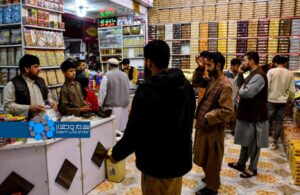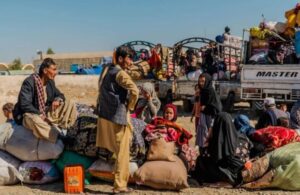Statement
Migration has been a constant companion of humanity, evolving in various forms and faces from the dawn of history to the present day. The reasons for migration can vary significantly based on individuals’ personality traits, social, cultural, economic, and political factors, each carrying its own set of consequences. The level of migration and the statistics of youth migrants in a society experiencing economic hardships and despair are often perceived as indicators of societal stagnation. Therefore, the fundamental issue addressed in this field study is to determine the number of family members who have migrated among the families selected as statistical samples, as well as identifying the peak periods of migration within these families. Additionally, investigating the reasons behind youth migration is another focal point of this research.
Background
While numerous reports and studies have delved into youth migration and fleeing from Afghanistan due to unemployment, the illegal migration and its consequences, youth conditions and repatriates, but there remains a gap in understanding the specific dynamics within families regarding migration trends. The exact number of individuals migrating from each family, the peak periods of migration among families, and the extent of desire for migration and fleeing the country among the populace have not been thoroughly researched to date. Therefore, this study aims to provide a comprehensive examination by presenting statistics from sampling of families. Subsequently, it will investigate the migration rates over time and the inclination of people to flee the country. Finally, the focus will shift to families whose members have left the country for various reasons, marking the novelty and significance of this research report.
Survey questions
1. Has anyone in your family migrated?
2. How many members of your family have migrated?
3. When did the peak of migration occur within your family?
4. What are the reasons of your family members’ migration?
5. If the circumstance for migration is provided, will you migrate?
Survey objectives
1. To assess the extent of youth migration within families.
2. To provide statistical insights into individuals aspiring to leave the country.
3. To uncover the underlying reasons behind youth migration.
4. To identify the periods witnessing the highest surge in migration.
5. To explore the societal repercussions of youth emigration.
Survey period
This survey started on March 7, 2024 and ended on April 16, 2024.
Survey methodology
Given the nature of the report’s topic, data collection for this research was conducted in the field through the distribution of questionnaires. Utilizing the SPSS program, the collected data was analyzed and elucidated.
Survey challenges
While conducting research in Afghanistan poses its own set of challenges, this study encountered the following obstacles:
1. Limited participation from the statistical population.
2. Constraints in research resources.
3. Insufficient human resources for conducting the research.
Survey variables
The variables examined in this study include age, education level, migration status, youth, family, and repercussions.
Executive summary
The phenomenon of migration has intertwined with the fate and history of humanity, adapting to various political, social, cultural, and economic circumstances, as well as the evolutionary changes witnessed by human life. In the current conditions, the migration situation worldwide has taken on extensive and complex dimensions. While in the past, migration was primarily associated with challenges, especially in third world countries like Afghanistan, threats related to war, forced displacement, or natural disasters. In Afghanistan, most youth have fled the country due to economic hardships, despair about the future, or the political situation.
Salam Watandar conducted a survey involving 312 households in Kabul to examine the extent of youth migration and its repercussions in the country.
The respondents span various age groups, with 36.5% between the ages of 18 to 24, 36.9% aged 25 to 30, 16.3% in the age of 30 to 35, and 10.3% aged 40 and above.
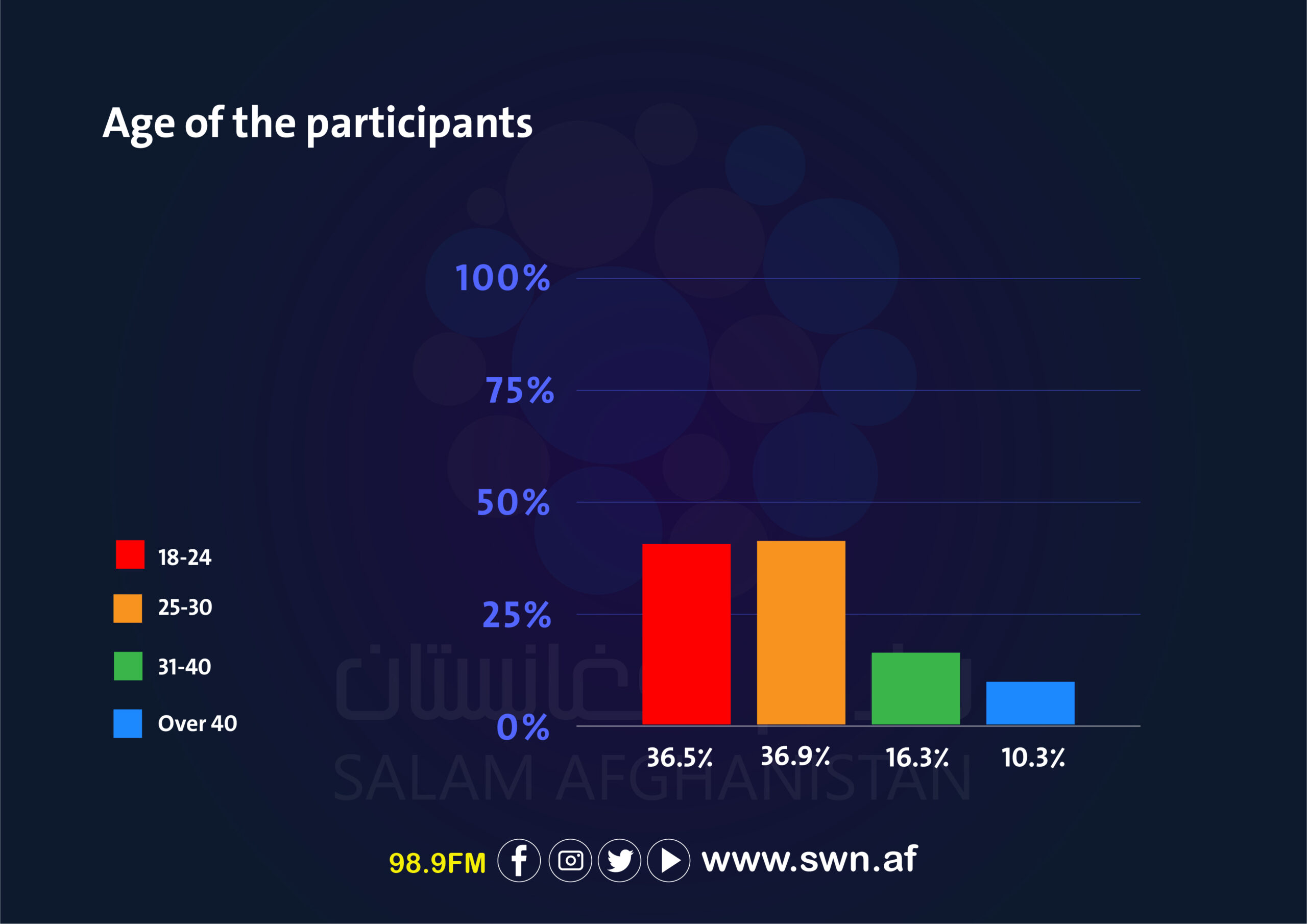
A field survey, conducted through questionnaire distribution, revealed that among the 312 households surveyed, 76.5% reported that their families members have migrated, and 23.5% said that their family members have not migrated.
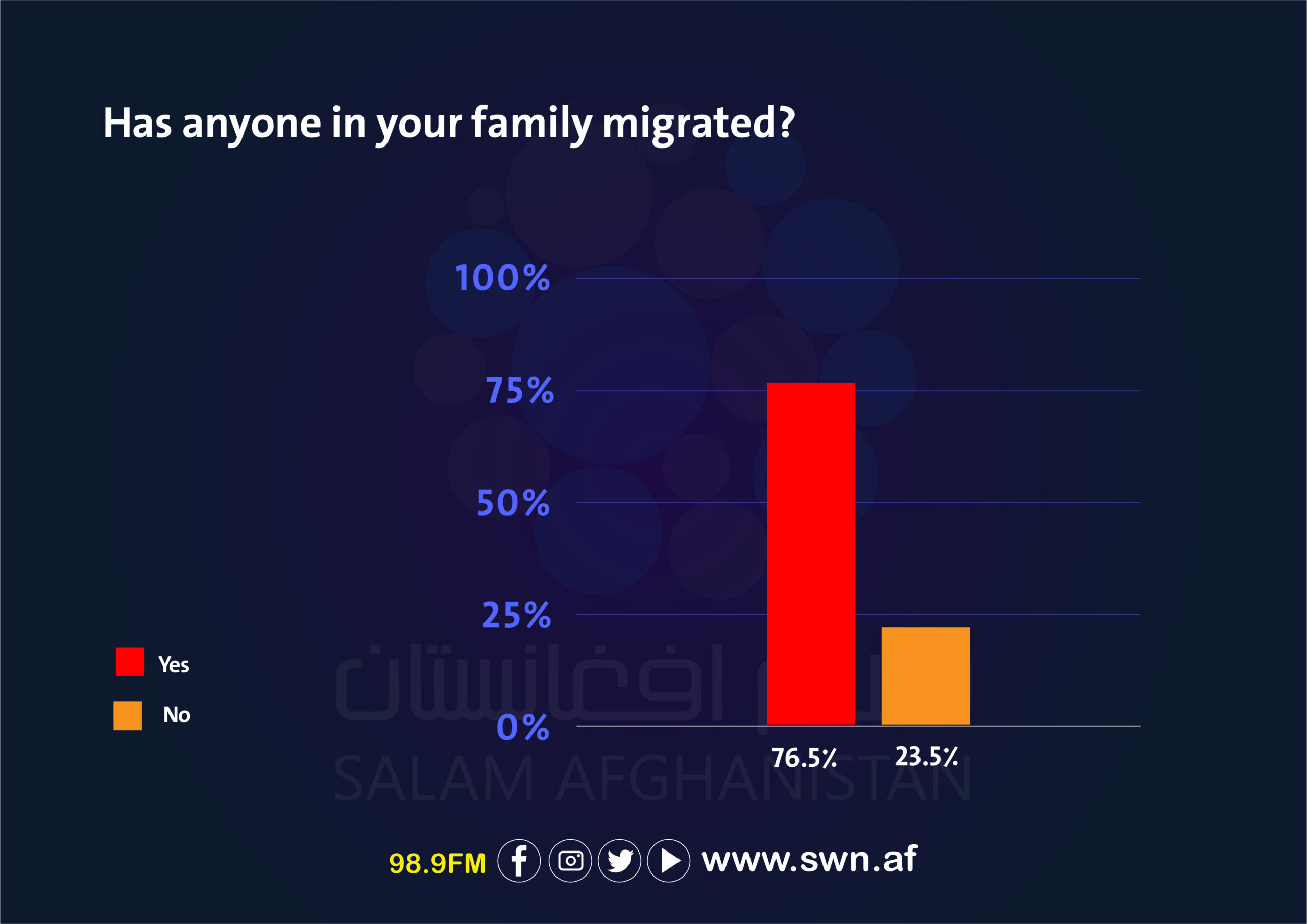
Out of the 312 households, 238 reported family members migrating, which among them, 47% said that one family member had migrated, 27% mentioned that more than two members had migrated, and 26% indicated that two members of their family had migrated.
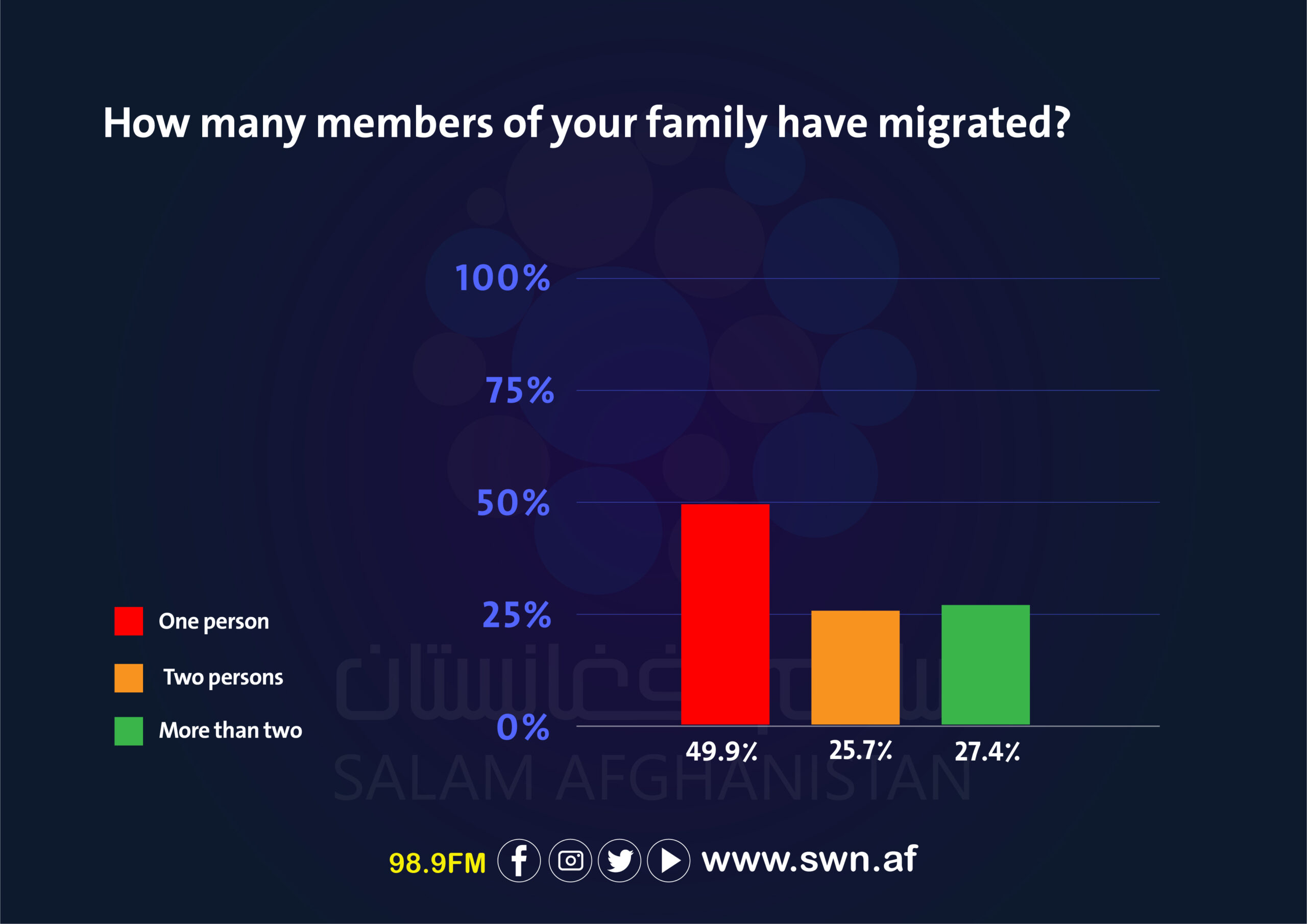
Out of the 238 households with family members who migrated, the breakdown of the relationships of the migrants is as follows:
– 61% reported that their young brother migrated abroad.
– 15% mentioned that their sister migrated.
– 5% stated that their husband migrated.
– 8% indicated that their child migrated.
– 7% reported both their daughter and son migrated.
– 5% mentioned their father migrated.
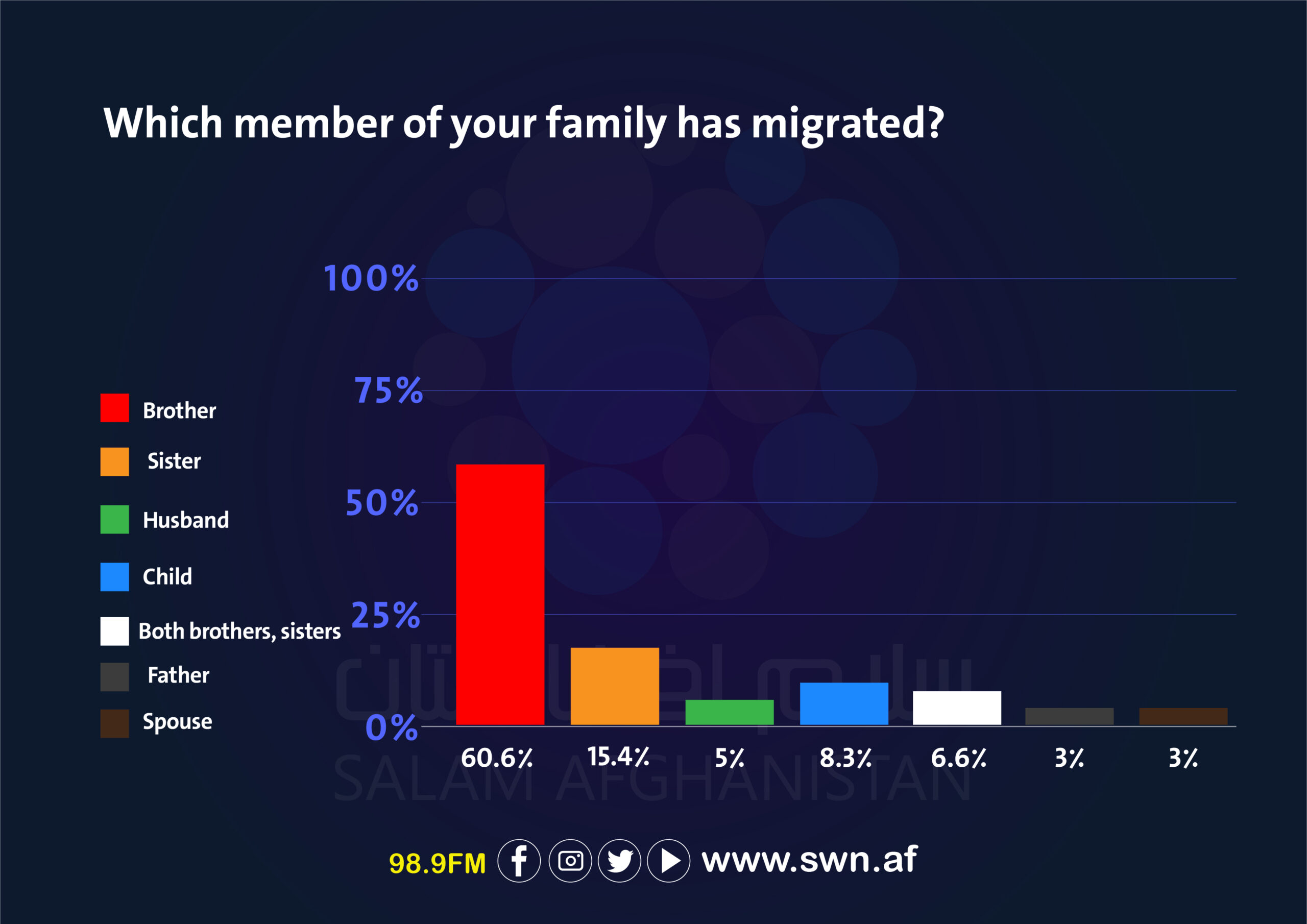
When asked if they would migrate if the circumstances arose, 82.7% of respondents answered yes. They expressed a desire to seek a better life and escape the current challenges in Afghanistan. Meanwhile, 17.3% stated they would not leave the country and would stay to rebuild it.
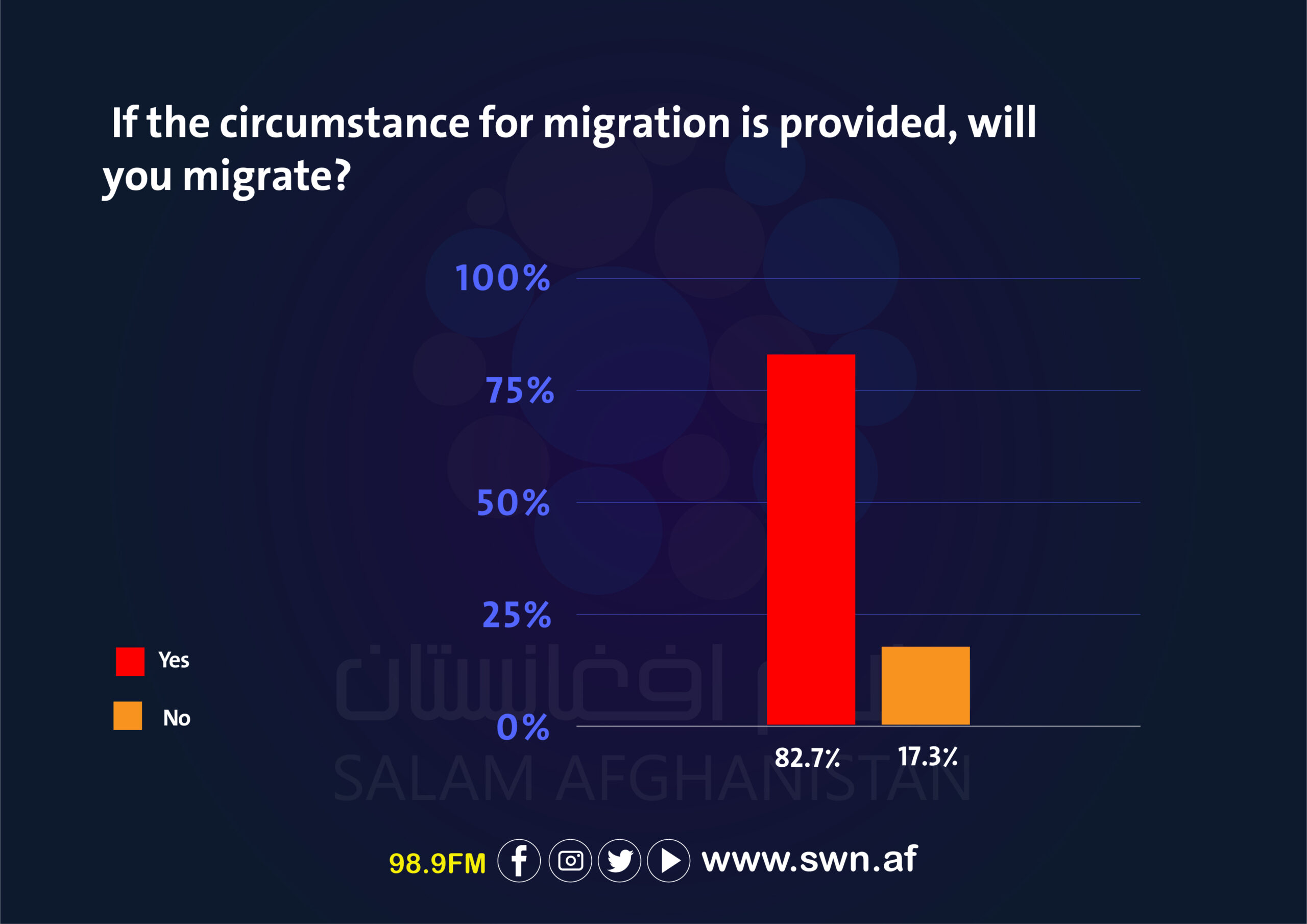
Comprehensive report of the survey
To assess the extent of youth migration within families and its consequences for the country, Salam Watandar initiated a survey in Kabul city. The survey aimed to identify the reasons for youth migration, determine the number of youths migrating from each family, the type of migration, and the youths’ inclination to leave the country.
Out of the 312 families surveyed, the distribution of respondents’ age groups was as follows:
– 36.5% fell within the 18-24 age bracket.
– 36.9% were aged between 25 and 30.
– 16.3% were in the 30-35 age group.
– 10.3% were aged 40 and above.
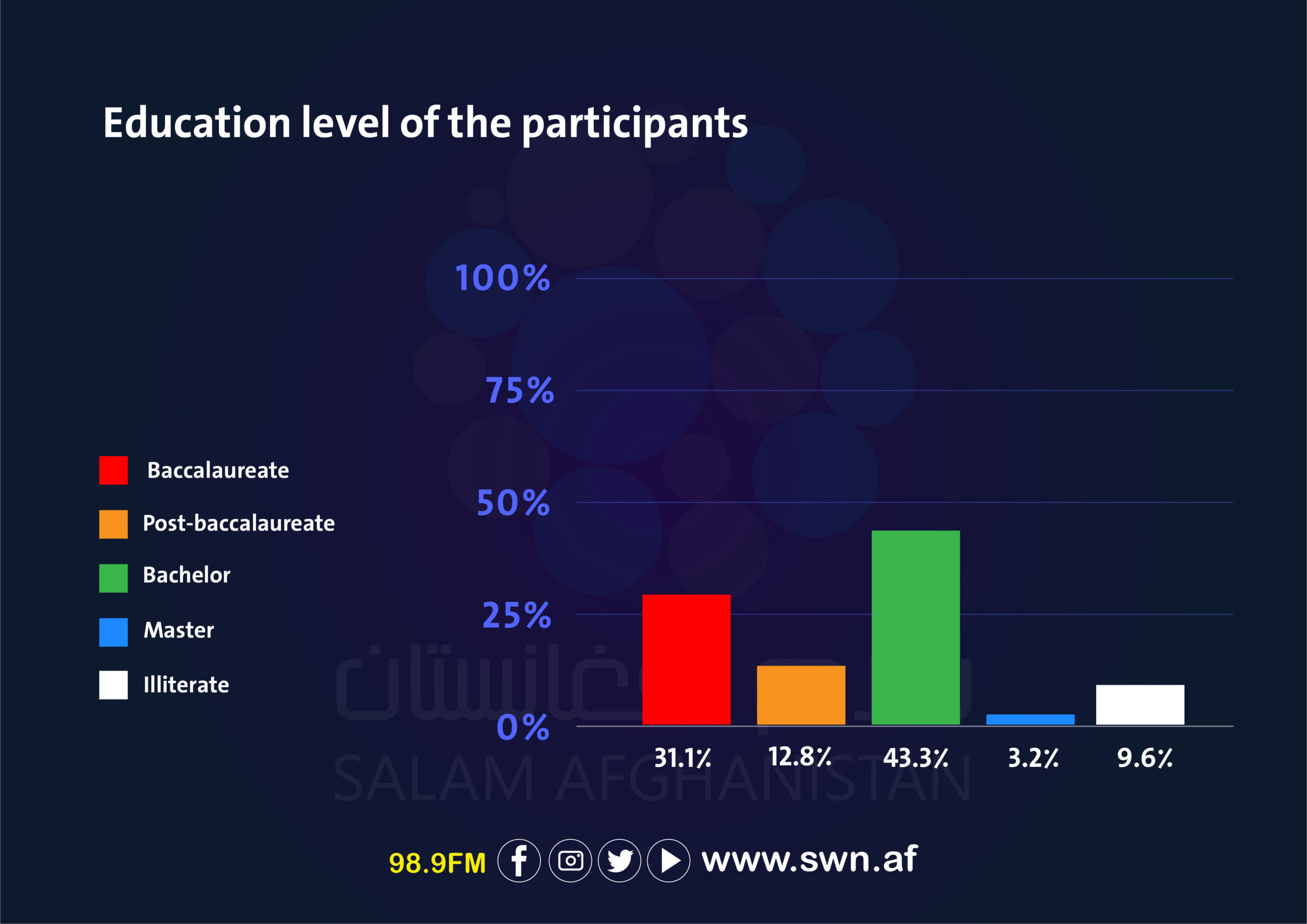
Out of the 312 respondents, 104 individuals indicating 33.3% of the total, reported that their families consisted of 7 to 10 members. Additionally, 80 respondents, constituting 25.6%, mentioned that their families had 5 to 7 members. Another 53 respondents, representing 17% of the total, stated that their families comprised 3 to 5 members. Moreover, 75 respondents, accounting for 24% of the total, reported having more than 10 members in their families.
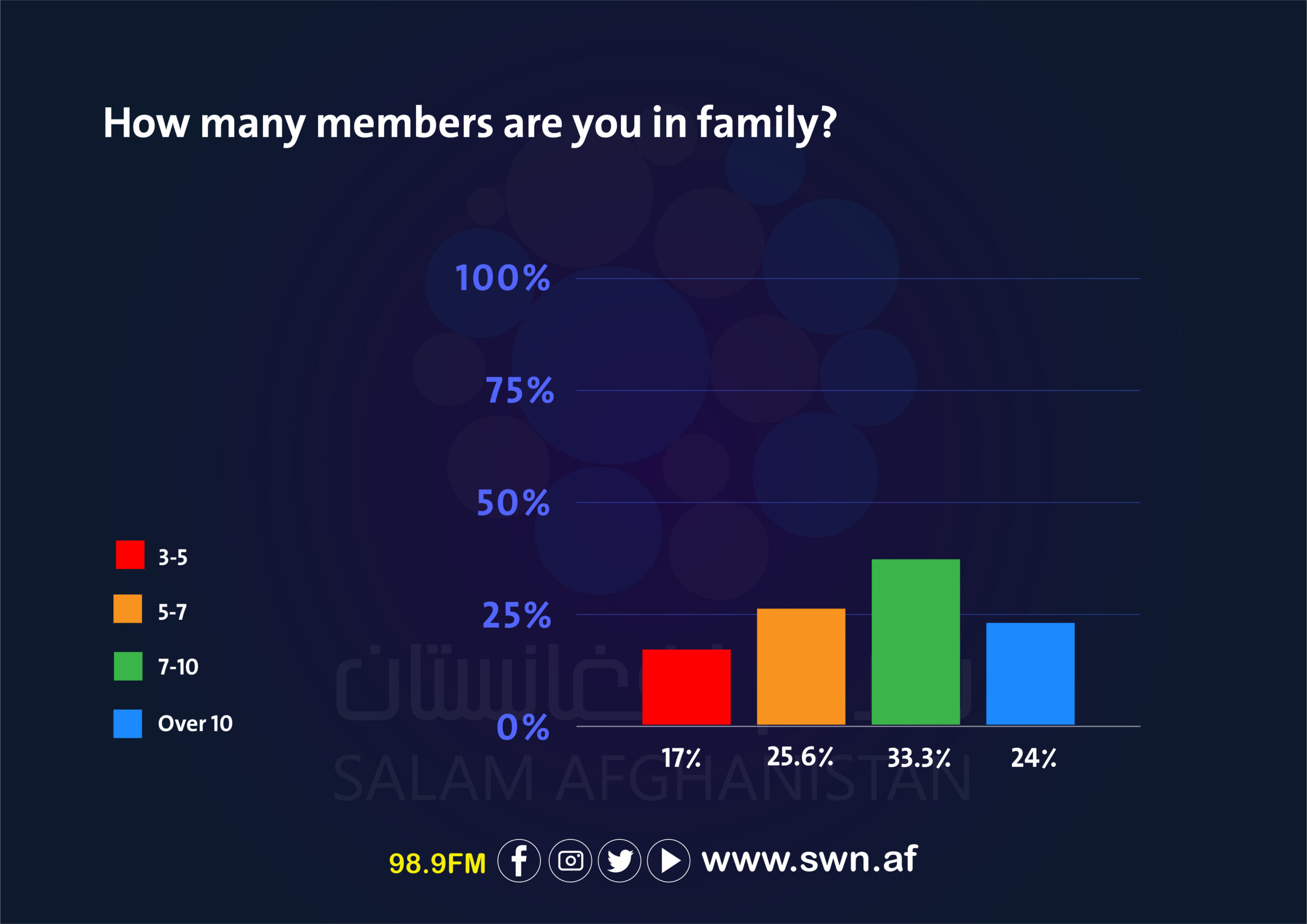
Out of the 312 families surveyed, 238 families, representing 76.5%, reported that their family members had migrated. Among these 238 families, 146 families, accounting for 47%, stated that one member of their family had migrated, while 27% of them mentioned that more than two members had migrated. Additionally, 26% of the respondents reported that two members of their family had migrated.
Out of the 238 families with migrant members, the majority, representing 61%, selected “brother” as the migrated family member. Following, with the highest percentage, 15% of respondents said that their sister had migrated. 5% of respondents chose “husband” as the migrated family member, while 8% stated that their child had migrated. Additionally, 7% of these families reported that both their daughter and son had migrated. Finally, 4% of respondents selected “father” as the migrated family member.
Out of the 238 families, 160 respondents, representing 67%, said that their first family member migrated within the last two and a half years. Additionally, 78 individuals, constituting 33% of the respondents, mentioned that it had been more than three years since their first family member migrated.
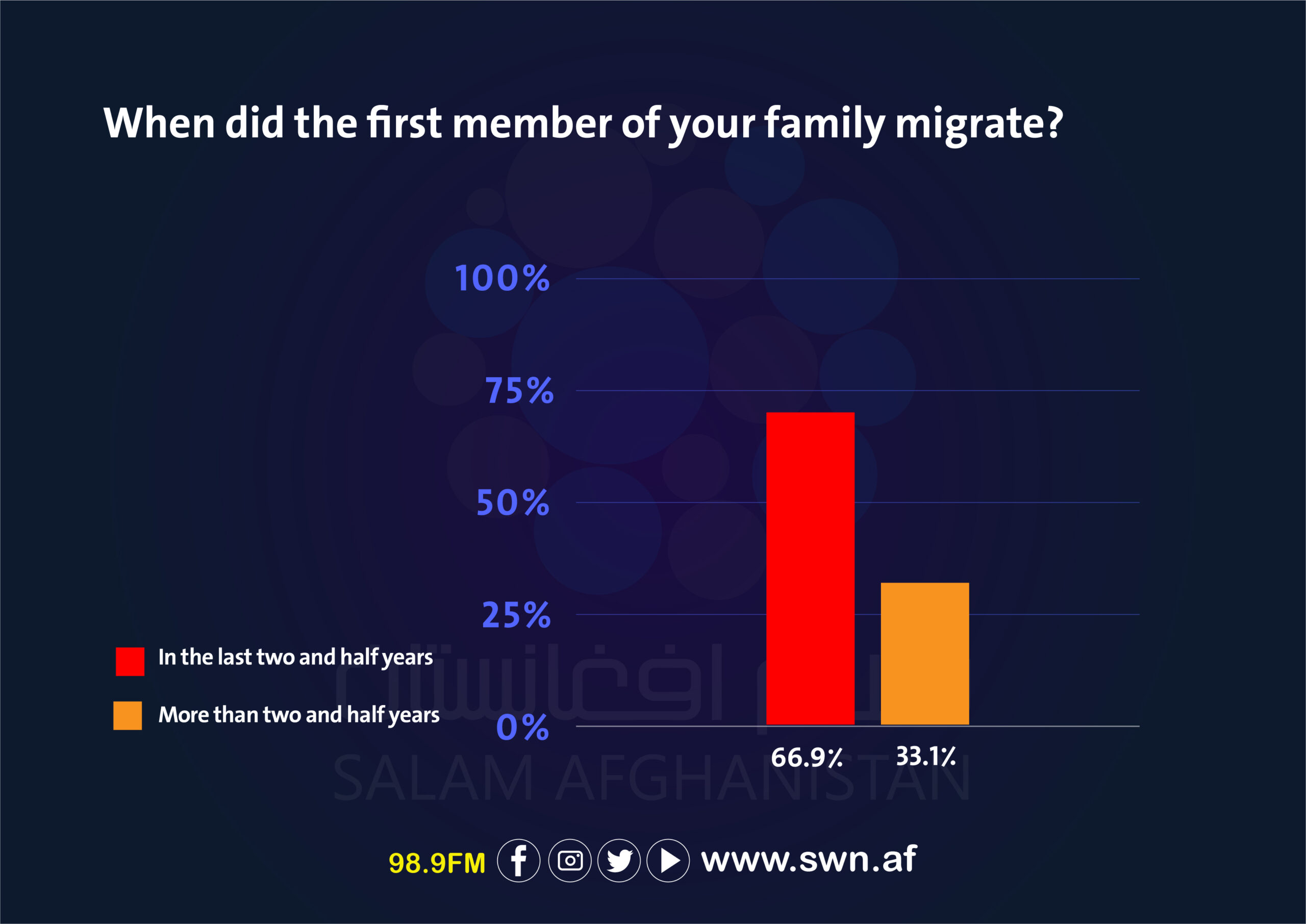
In alluded to, 77 percent of the families whose members have migrated responded that the highest number of migrations among their family members occurred in the last three years, following political upheavals in Afghanistan. Meanwhile, 23% of the families said that the highest number of migrations among their family members occurred in more than three years ago.
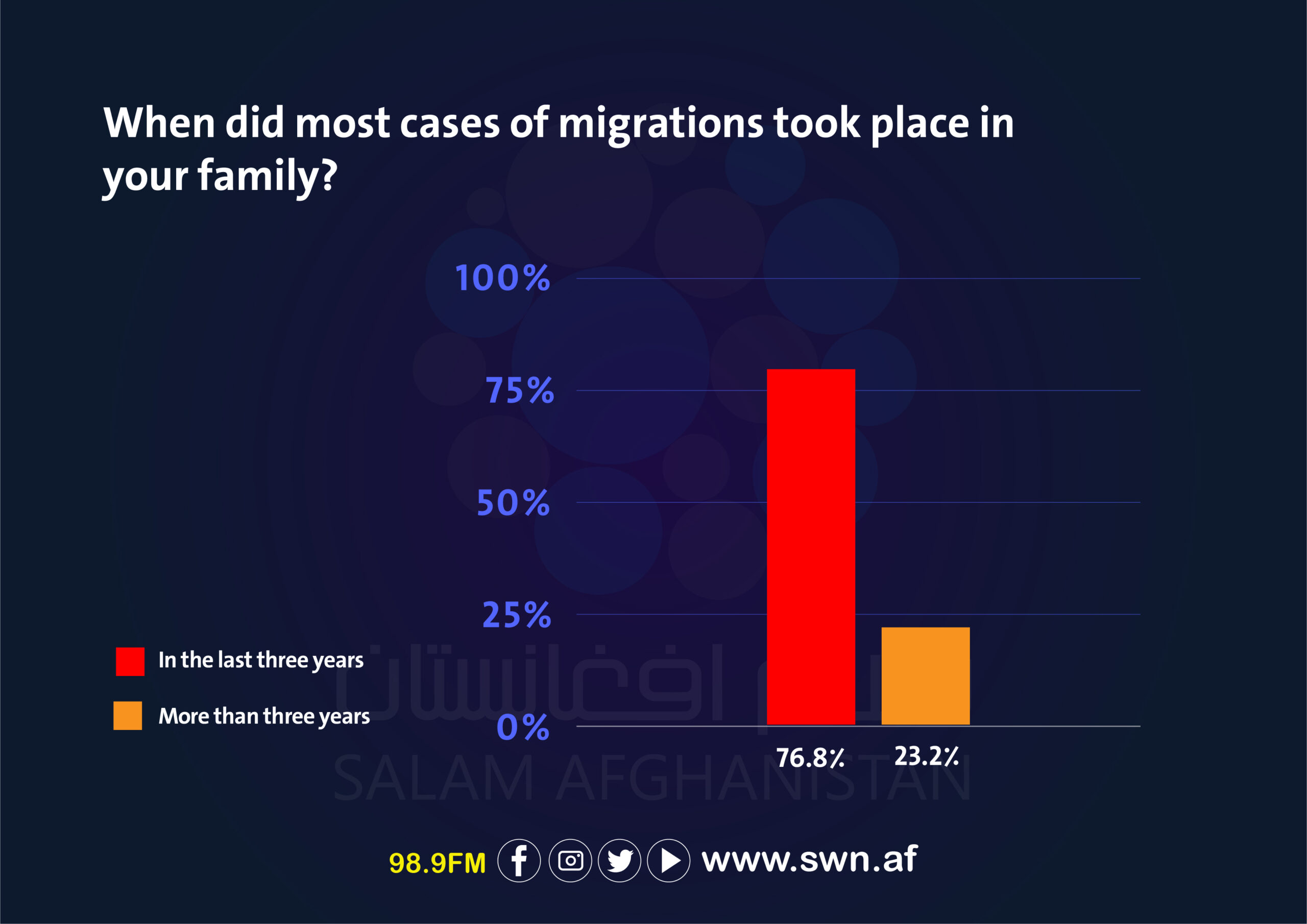
Among the families participated in the survey, they were asked about the reasons for the migration of their family members. 77 individuals, representing 31.8%, cited economic difficulties, security issues, and hopelessness about the future as reasons for the migration of their family members. 30.6% of them mentioned economic problems alone, while 26% chose hopelessness about the future, and 11.6% cited security issues and threats.
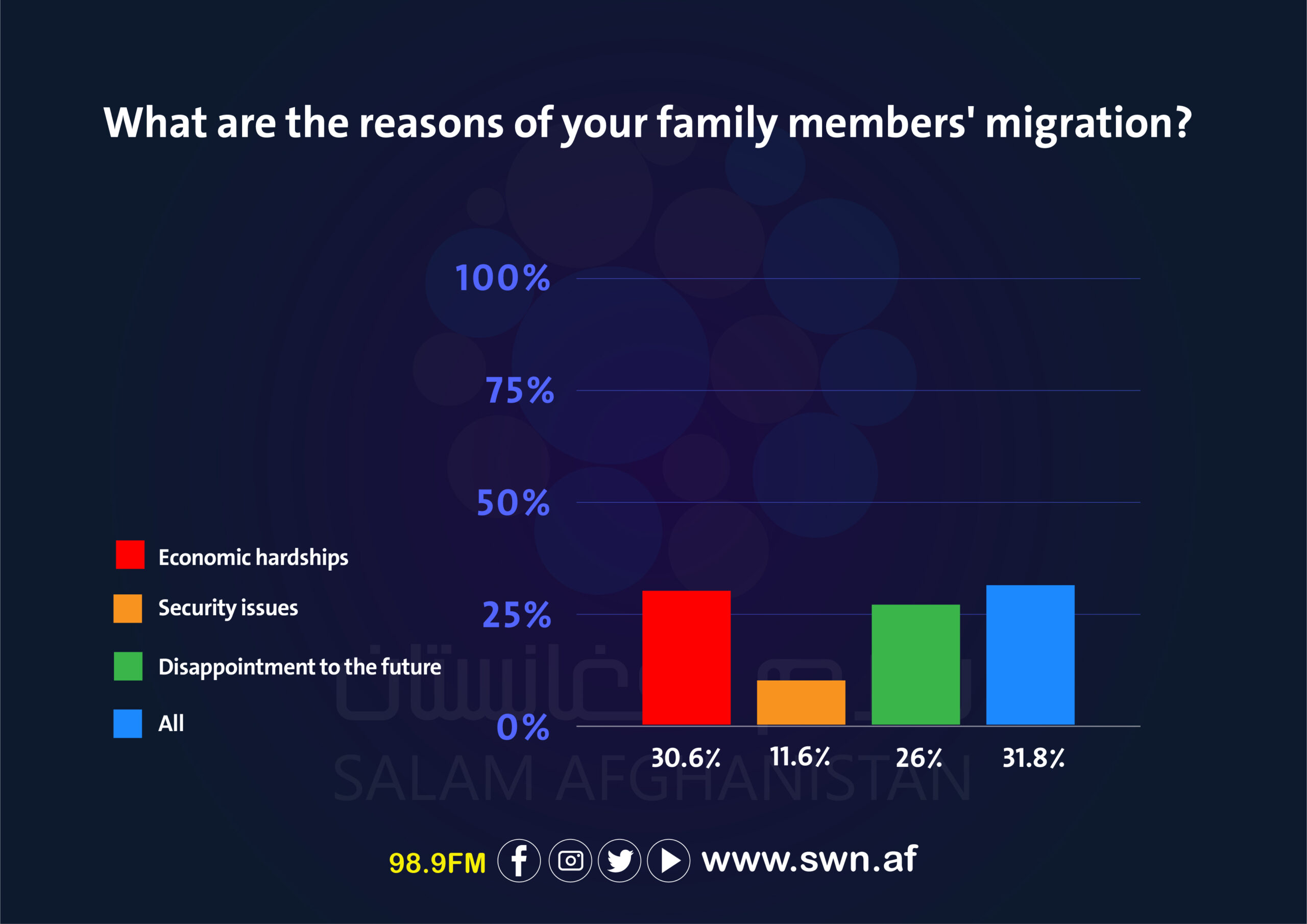
In this survey, the type of migration of the respondents’ family members was also inquired. 120 which representing 51% of the families, stated that their family members migrated legally. Furthermore, 49% of them mentioned that their family members migrated illegally.
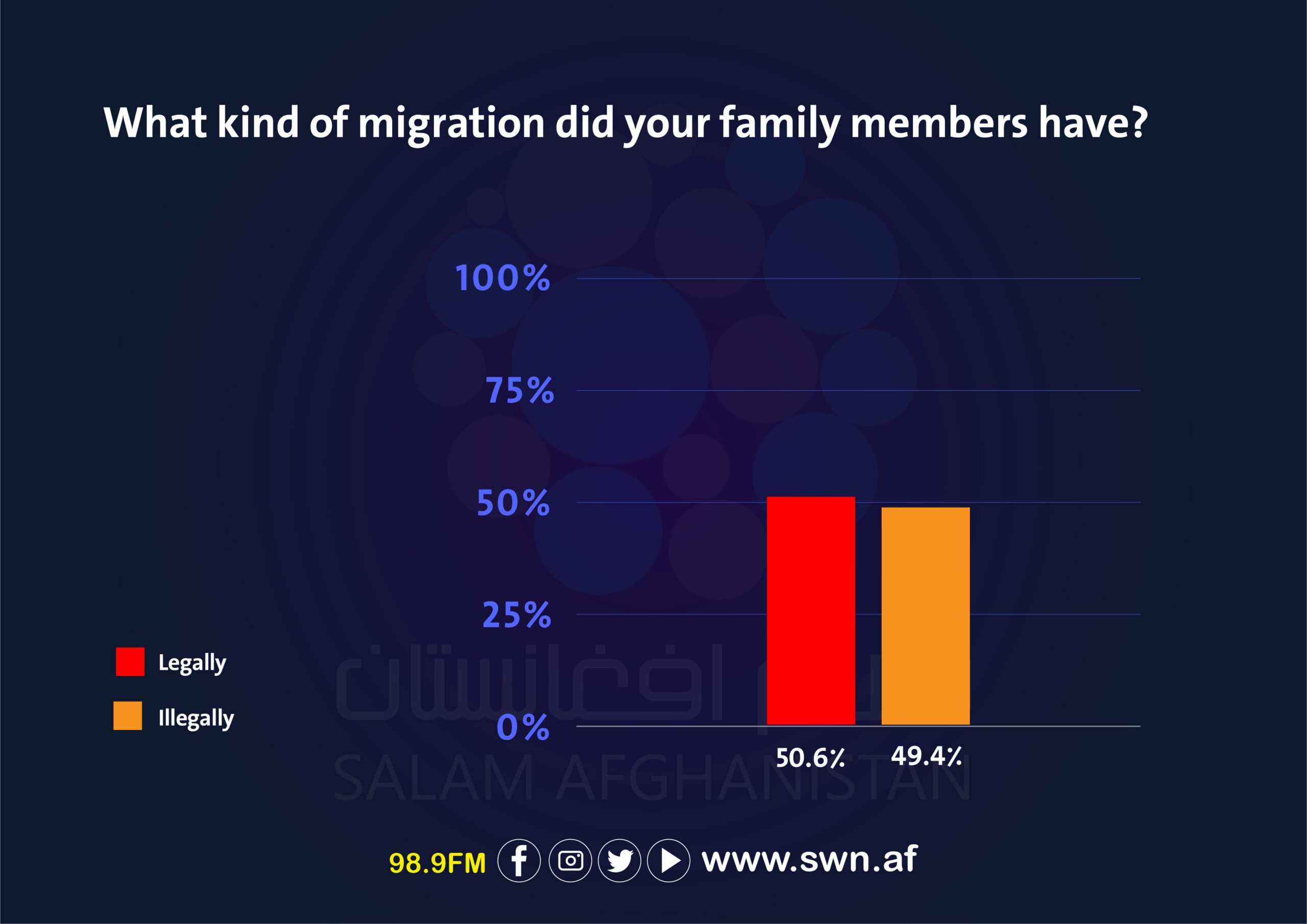
In this survey conducted in Kabul with a sampling of 312 families, respondents were asked if they would migrate if the circumstance arose. Out of the total of the respondents, 258 individuals, representing 83%, chose “Yes” and stated that they would leave the country to build a better life and escape the existing problems in Afghanistan. Meanwhile, 17% of the respondents stated that they would not leave the country and would stay to rebuild it.
Recommendations
Based on the findings of this research, the following recommendations are proposed:
1. Creating job opportunities for young people to reduce their migration.
2. Instilling motivation and hope for the future among youth.
3. Raising awareness about the consequences of illegal migration.




